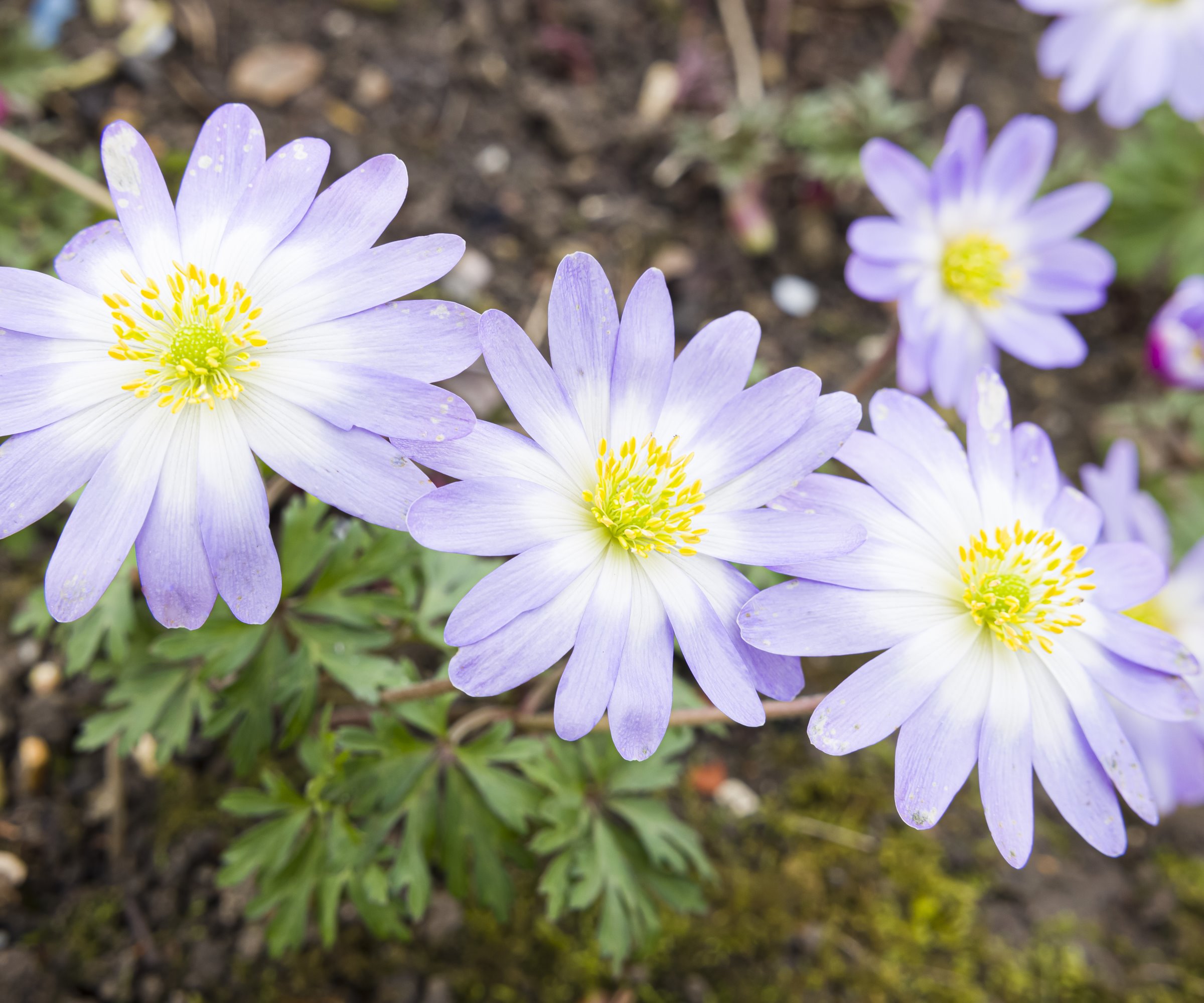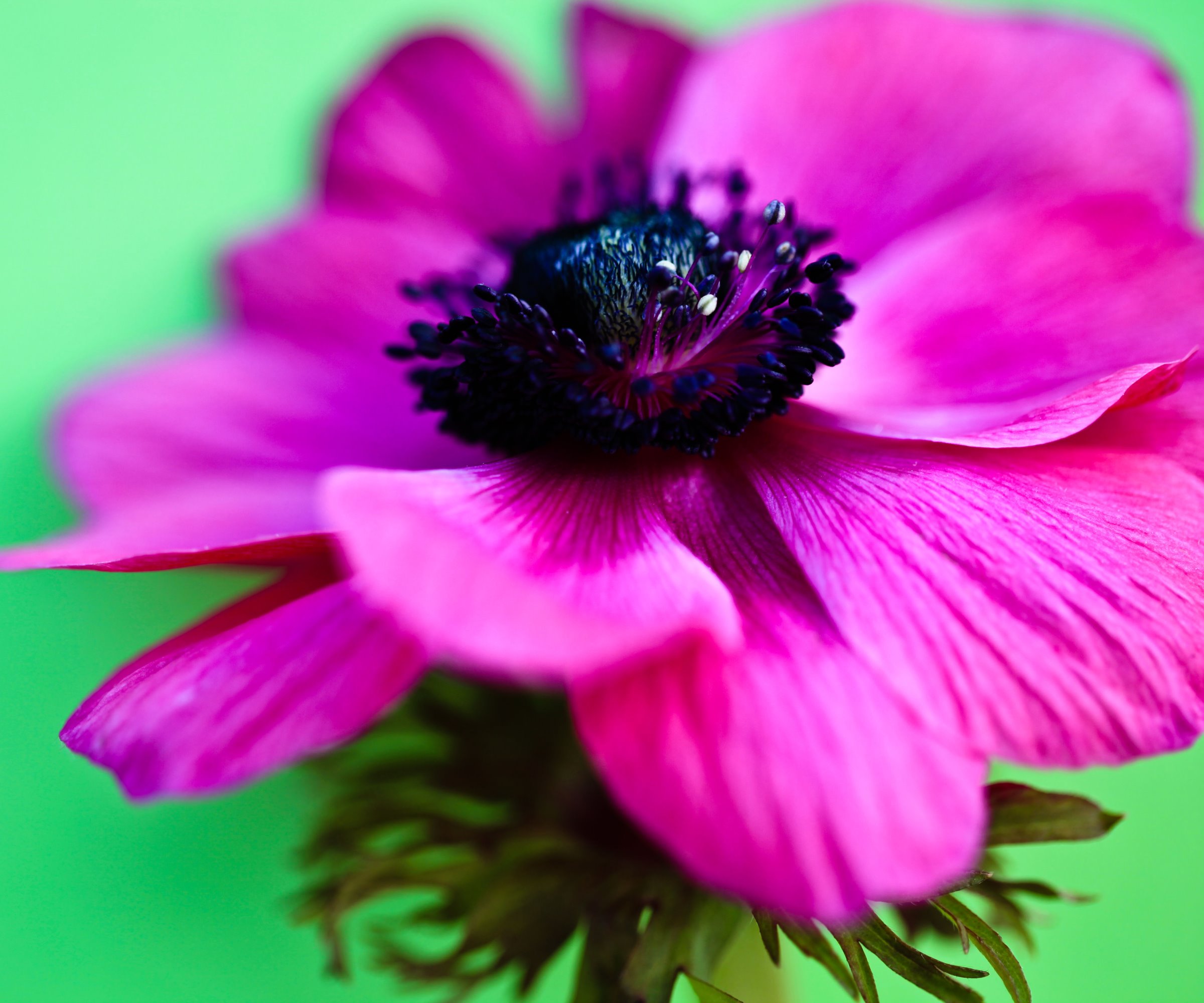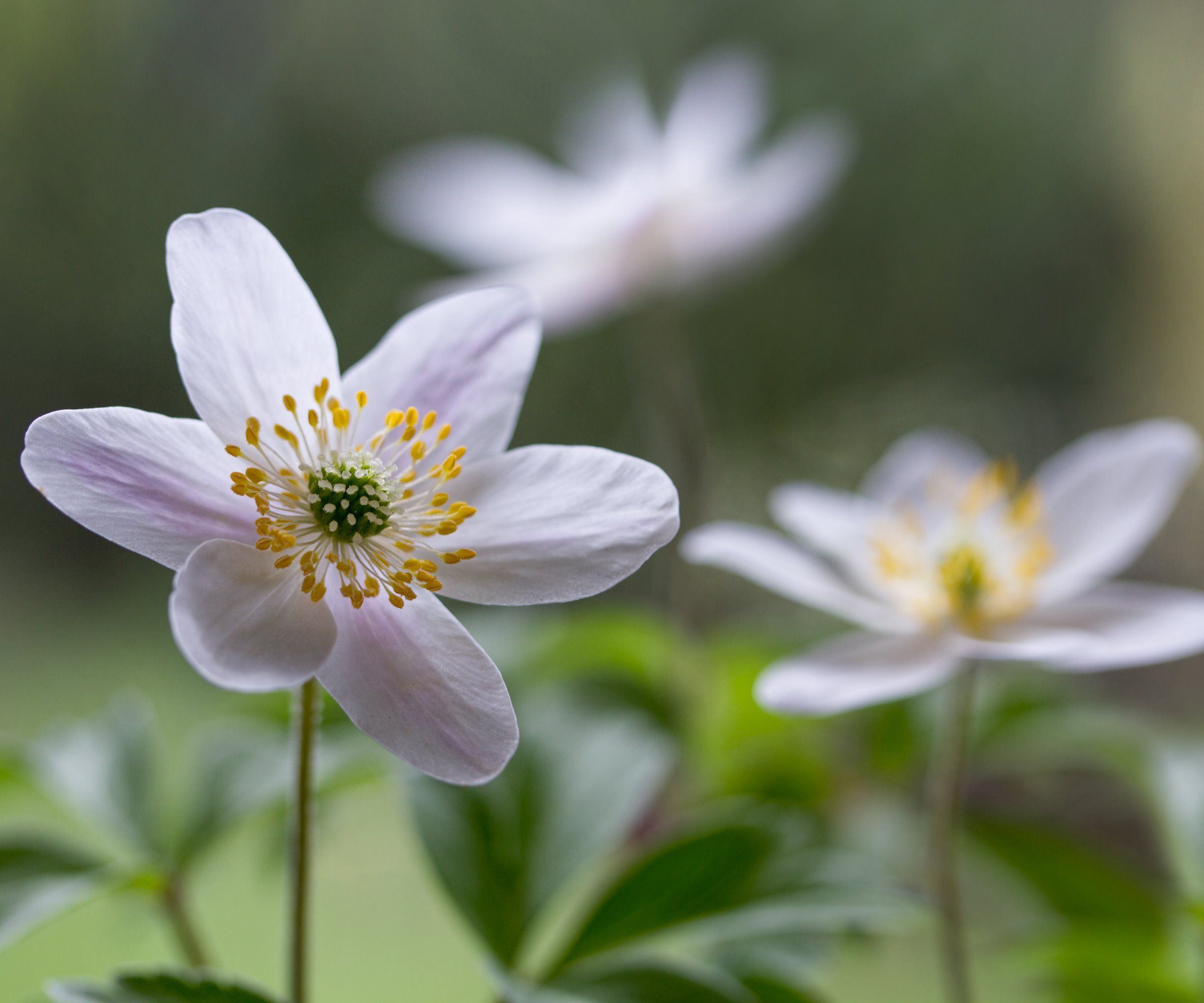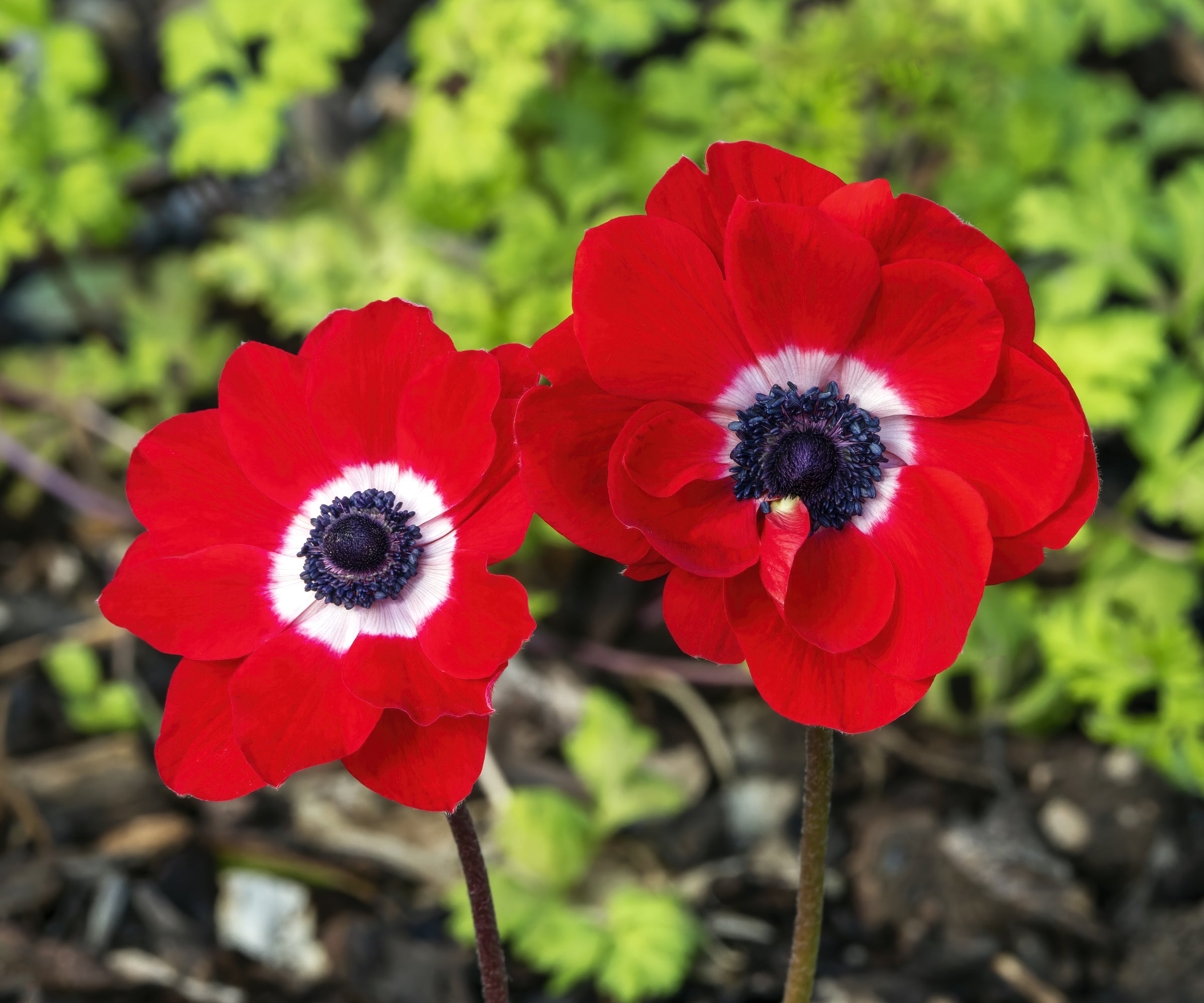When to plant anemone bulbs – the right time for spring and summer-flowering types
Understand the right time to plant anemones - and how to look after the corms before planting - for yearly success


Anemones are perennial plants that are part of the buttercup family, and they are much-loved for their delicate and colorful flowers. They are commonly known as windflowers but the name anemone actually covers several different species, including the spring-flowering woodland types and tender summer-flowering types.
In fact, anemones are grown from corms, rather than bulbs, but they do tend to be sold with other popular fall-planting bulbs. These miniature bulbs are best planted at different times of the year, depending on the type of anemone you want to grow. If you want to know when to plant anemone bulbs, then you need to know the variety you are planting.
Anemone corms are commonly sold in the fall or spring, and all varieties will flower in their first season, before dying back and going dormant. Some types of anemones are hardy and can survive outdoors throughout winter, while others are more tender and may need protecting or moving indoors for winter.

Anemone blanda flowers in early spring
When to plant anemone bulbs?
The planting times for anemone bulbs can vary depending on the species and the local climate. An important part of planting these bulbs is to get them in the ground as quickly as possible after you purchase them, as they can dry out. Whether you are putting them in the ground, or planting bulbs in pots, it is recommended to soak anemone bulbs in lukewarm water to rehydrate them before planting. We take a closer look at the two different times to plant anemone bulbs, together with certain popular types of anemones that are best planted at either time.

Anemone coronaria are more tender types of anemone
Planting anemones in fall
Spring-flower anemones bloom from February until April and are usually planted in the fall, in September or October. Popular types that should be planted at this time include Anemone blanda, or winter wildflower, and Anemone nemorosa, also known as wood anemone. These can be planted in the ground outdoors, while Anemone coronaria can also be planted in fall, either in pots indoors or outside in milder areas.
Anemone coronaria, commonly known as poppy anemone, can actually be planted at several different times of the year, depending on when you want them to flower. Planting them in fall and protecting them over winter can force bulbs and help them produce flowers in early spring.
Lars Nyman, an experienced gardener and founder of Taim.io, says that planting in fall ‘allows the bulbs to establish their root system’ before the colder weather of winter arrives.
Design expertise in your inbox – from inspiring decorating ideas and beautiful celebrity homes to practical gardening advice and shopping round-ups.
‘It's best to plant anemone bulbs at least 6-8 weeks before the first expected frost date in your area. Planting any later may not provide enough time for them to establish before winter. In colder climates, this could mean planting as early as late summer,’ he adds.
See the range of spring-flowering anemones available at Dutch Grown

Lars Nyman is an experienced gardener and the founder of Taim.io, the
gardening site that teaches people how to grow. He is a is a start-up veteran and has a lifelong passion for gardening & agriculture.

Anemone nemorosa are commonly known as wood anemones
Planting in spring
Anemones that bloom during the summer, like the aforementioned Anemone coronaria, can be planted in the spring, anytime between April and June for flowering times from June to September. The bulbs can go into the ground anytime after the last frost for your area. One example of a type to plant in spring is Anemone coronaria 'Bordeaux', available from Nature Hills.
If you missed the fall planting window for anemones, they can be planted once the frosts have passed and the soil is workable. Depending on your US hardiness zone, this can anytime from late winter to early spring.

Anemone coronaria can be grown for cut flowers
Where to plant anemone bulbs
Now you know the right time to head out and plant, you may find yourself wondering, where is the best place to plant anemone bulbs? Well, it can vary. Anemones types such as Nemorosa and Anemona are more woodland plants that like dappled shade, while Coronaria plants want lots of sun and can work perfectly in flower beds or in container gardens.
Mike Lansing, managing editor of Planters Digest, says that spring flowering types are easy to grow and ‘can add early spring brightness to still-bare trees and shrubs’.
He adds: ‘In most outdoor locations, anemones are simple to cultivate and create a stunning, colorful display, but they prefer growing in a protected sunny or somewhat shaded location with rich, well-drained soil or multipurpose compost.’
Summer-flowering anemones want to be planted in a sunny and sheltered spot that has a free-draining soil type. They do not want to sit in constantly damp soil and can benefit from winter protection, either being brought indoors or protected by a layer of mulch.

Mike Lansing is the co-founder and managing director of Planters Digest, and a certified garden designer, who turned a passion for plants into a thriving business.
FAQs
Do you have to soak anemone bulbs before planting?
It is beneficial to soak anemone bulbs prior to planting bulbs in fall or spring. The experts at wholesale bulb merchant Dutch Grown recommend to ‘soak the anemone tubers for a few hours or overnight in lukewarm water to rehydrate them’ before planting. The process of wetting the bulbs is vital if the bulbs do seem dry and it will be helpful in speeding up the process of germination.
Can I plant anemone bulbs in January?
Bulbs of Anemone coronaria can be planted indoors in January to force them into giving an earlier flush of flowers. If you live in a very mild area that does not have frosts throughout January, then it would be possible to plant bulbs outdoors when the soil is workable.
Can I plant anemone bulbs in September?
September is an ideal time to plant anemone bulbs that will bloom in spring. They can be planted this month alongside other popular spring bulbs, such as daffodils, hyacinths, and crocuses.
If you want to consider forcing bulbs indoors for displays of blooms during the colder months when there is little color out in the winter garden, then as well as anemones you could also consider growing hyacinths, daffodils or irises in this way.

Drew has worked as a writer since 2008 and was also a professional gardener for many years. As a trained horticulturist, he worked in prestigious historic gardens, including Hanbury Hall and the world-famous Hidcote Manor Garden. He also spent time as a specialist kitchen gardener at Soho Farmhouse and Netherby Hall, where he grew vegetables, fruit, herbs, and cut flowers for restaurants. Drew has written for numerous print and online publications and is an allotment holder and garden blogger. He is shortlisted for the Digital Gardening Writer of the Year at the 2025 Garden Media Guild Awards.